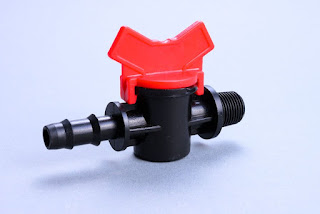What Causes Burn Marks and How to Improve it in Plastic Injection Molding-2?
The use of injection molding may produce similar, homogeneous components. Injection molding allows for the production of thousands to millions of pieces. Efficiency is a watchword since machinery and tools need large capital investments. Defects result from injection molding inefficiencies in any area. Time and financial costs result from these flaws. With injection molding, a plethora of things may go wrong. Among these is the product developing burn marks. Considering that the burn mark is a sign of soot or broken materials. Recycling is a requirement. To put it another way, recycling the entire portion would introduce contamination thus, it is not a smart idea. This implies that you have also wasted time producing the now-discarded portion. Additionally, you lost some plastic.
Over time, the quality of your mold
deteriorates as well. The amount of cycles left in the mold's lifespan
determines its grade. Some molds have a million cycle limit, and others have
only a few thousand. Therefore, you are squandering mold lifetime if you have
to reject more pieces because of flaws. Prevention is preferable to early
detection. The goal should be to prevent these flaws from developing in the
first place. This article addresses burn marks, examining their many origins
and remedies. This article's advice is meant to serve as broad guidance. Get in
touch with custom
injection mould manufacturer
right now to receive a professional service tailored to your needs.
What are Burn Marks and Why You Must Avoid them in Plastic Injection
Molding?
The product and the plastic injection mold design are both impacted by burn marks. It is easily recognized by a discernible soot deposit on the product's surface. It is also known as sieling or gas traps. Injection molding frequently encounters this issue. The part has to be rejected as soon as it happens. Function may also be impacted by burn marks, which also indicate a deterioration that took place. Thus, the visual burn mark is not the only issue. It is also a sign of weakness on the part of the burn mark. The physical characteristics of the undamaged plastic will not be present in the burned portion of the material. Its elasticity and impact strength will be lost as a result. The physical attributes and the plastic's chemical qualities are related. These polymers' chemical structures change as they burn. Thus, their physical characteristics also change.
Causes
Inefficiencies are the source of any flaw in
the product. This may result from the equipment, the procedure, or the
substance utilized. Similarly, any of them or a combination may cause burn
scars. Specific inefficiencies may result in several types of product defects.
For instance, the object might contain welded lines and a warped portion. H
Burn marks can also impact function since they indicate a deterioration. Thus,
the visual burn mark is not the only issue. It is also a sign of weakness on
the part of the burn mark.
Gas trapped within the melt
This is the main reason injection molding burn
markings. It causes more issues as well. Burn marks and other product flaws
result from this. The gas becomes compressed when it enters the melt. a high
pressure, lowering the necessary temperature for ignition. for the gas to
ignite more quickly.
Uneven Temperature Distribution
There are several possible causes for this.
It's possible that the screw isn't melting and mixing the material very well.
Low injectable torque or rpm is the cause of this. It's also possible that the
melt is too viscous, reducing the benefit of mixing. The mold may have an
uneven temperature distribution. This is a result of the mold filling with a
bad flow pattern.
Melt Temperature is Too High
Overheating of the melt temperature causes
more than just deterioration. It also creates the ideal environment for
additional mishaps. Degradation of the plastic may exacerbate other issues,
such as trapped gas. Volatile substances may also be released from plastic at
an excessive melt temperature. Consequently, burn scars resulted. As mentioned
in the section above, burning marks are caused by trapped air.
Pretreatment of pellets
It is crucial to dry properly. especially when
handling polymers that have a propensity to absorb moisture. Make sure the
pellets are dried to almost no moisture content. This moisture content should
be less than 0.2%. The dry plastic has to be sealed tightly or put straight to
the hopper. This keeps moisture from reabsorbing into it.
Mold Filling Velocity
High velocity introduces turbulence into the
system, and thanks to the enhanced turbulence, gas can combine with the melt.
This applies more specifically to very viscous melts. The harder it is for the
trapped air to escape, the higher the viscosity of the melt. Burn scars are the
result of gas remaining in the stream.
Conclusion
Burn markings lead to apparent flaws in the
part and part rejection. The causes might range from trapped gas in the melt to
direct burns. Indirect causes are caused by incorrect mold filling or
backpressure. The issue of burn marks can be resolved in a variety of ways.
This may involve resolving inefficiencies with the cheap plastic injection mold, material, or machine.

Comments
Post a Comment